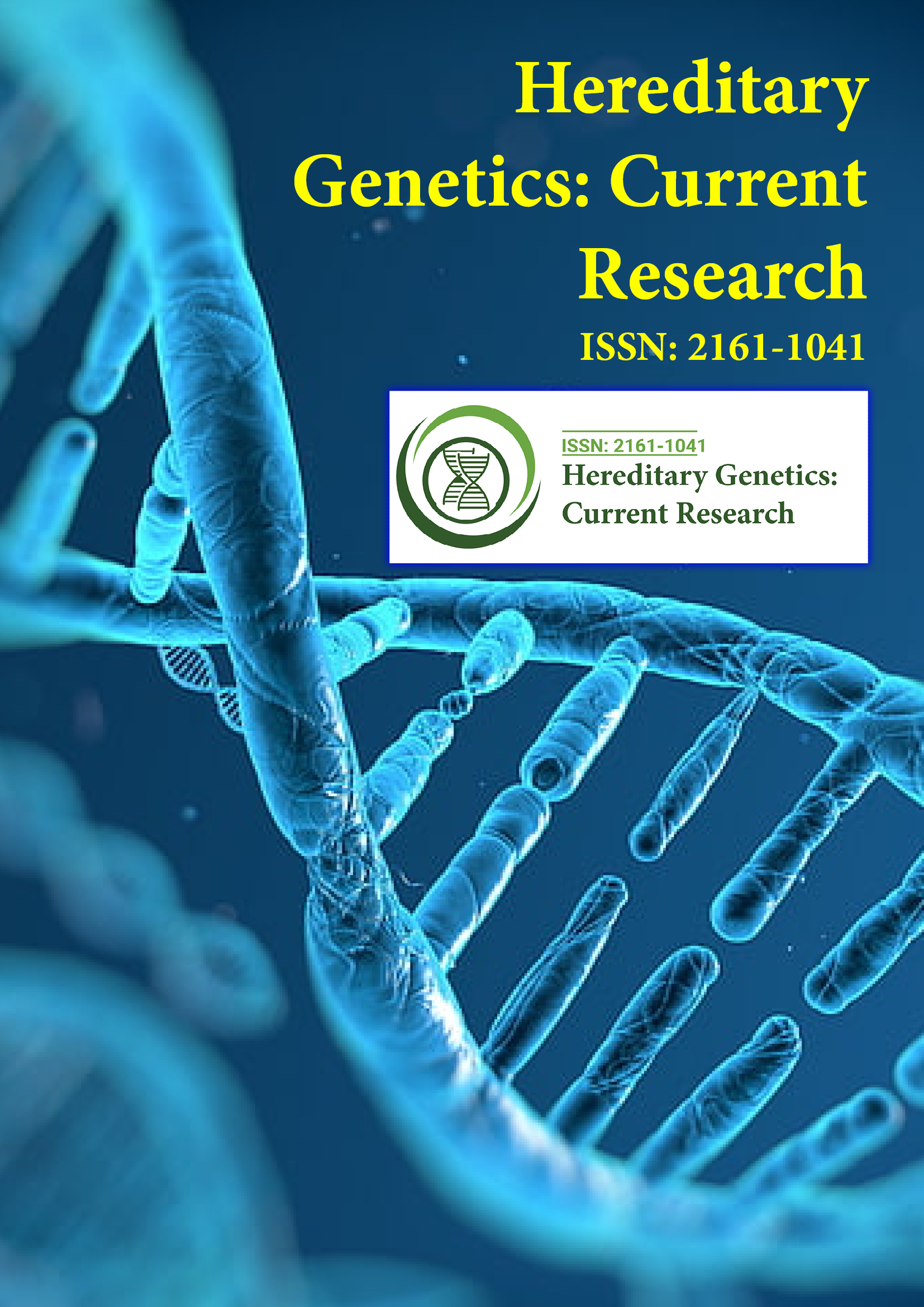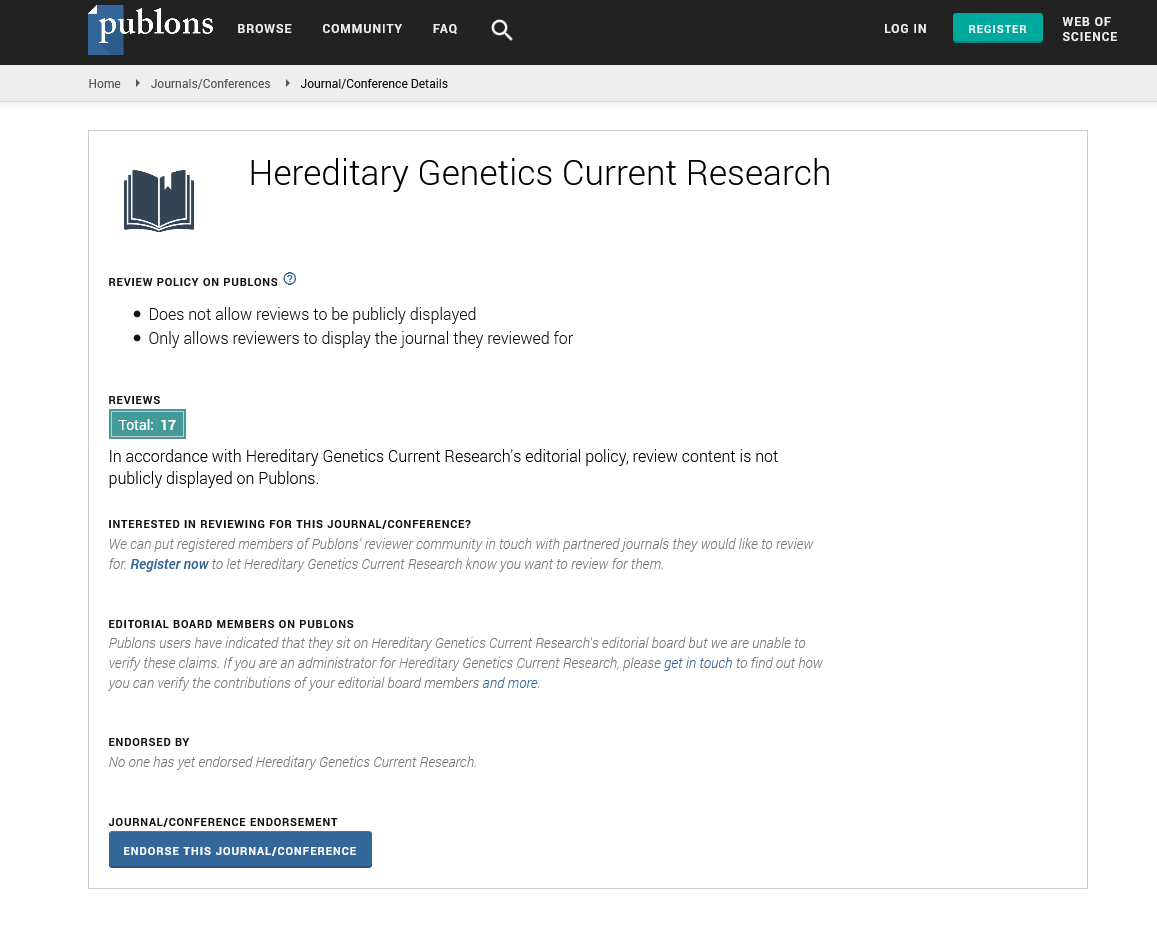Indexed In
- Open J Gate
- Genamics JournalSeek
- CiteFactor
- RefSeek
- Hamdard University
- EBSCO A-Z
- NSD - Norwegian Centre for Research Data
- OCLC- WorldCat
- Publons
- Geneva Foundation for Medical Education and Research
- Euro Pub
- Google Scholar
Useful Links
Share This Page
Journal Flyer

Open Access Journals
- Agri and Aquaculture
- Biochemistry
- Bioinformatics & Systems Biology
- Business & Management
- Chemistry
- Clinical Sciences
- Engineering
- Food & Nutrition
- General Science
- Genetics & Molecular Biology
- Immunology & Microbiology
- Medical Sciences
- Neuroscience & Psychology
- Nursing & Health Care
- Pharmaceutical Sciences
Commentary - (2024) Volume 13, Issue 4
Hereditary Hemochromatosis: A Comprehensive Overview of Genetics and Pathogenesis
Yukio Murakami*Received: 29-Nov-2024, Manuscript No. HGCR-24-28205; Editor assigned: 02-Dec-2024, Pre QC No. HGCR-24-28205 (PQ); Reviewed: 16-Dec-2024, QC No. HGCR-24-28205; Revised: 23-Dec-2024, Manuscript No. HGCR-24-28205 (R); Published: 30-Dec-2024, DOI: 10.35248/2161-1041.24.13.294
Description
Hereditary Hemochromatosis (HH) is a genetic disorder characterized by excessive iron absorption and deposition in tissues, leading to organ damage and dysfunction. It is one of the most common inherited disorders in individuals of Northern European descent, with a prevalence of approximately 1 in 200 for homozygous mutations. Advances in genetics and molecular biology have significantly enhanced our understanding of its pathogenesis, diagnosis and management.
The genetic basis of HH primarily involves mutations in the HFE gene, located on chromosome 6. The most common mutations associated with HH are C282Y and H63D. Homozygosity for the C282Y mutation accounts for the majority of clinically significant cases, while compound heterozygosity for C282Y and H63D also contributes to the disease in a smaller subset of patients. These mutations impair the interaction between HFE protein and transferrin receptor 1, disrupting iron homeostasis. Consequently, hepcidin, the key regulatory hormone for iron metabolism, is inadequately produced, leading to unregulated iron absorption in the intestine.
While HFE-related HH is the most prevalent form, non-HFE variants, such as those involving mutations in TFR2, HJV and HAMP, also contribute to hereditary iron overload syndromes. These forms are less common but often manifest with earlier and more severe clinical presentations. Research from the Broad Institute and Max Planck Institute continues to describe these genetic variants to expand our understanding of iron metabolism and its regulatory pathways.
The pathogenesis of HH is driven by progressive iron accumulation in vital organs, including the liver, heart and pancreas. In the liver, excess iron induces oxidative stress, leading to hepatocellular injury, fibrosis and, in advanced cases, cirrhosis or hepatocellular carcinoma. Cardiac involvement may manifest as cardiomyopathy or arrhythmias, while pancreatic damage can result in diabetes mellitus, often termed “bronze diabetes” due to the associated skin pigmentation. Joint involvement, particularly in the hands and fatigue are also common manifestations, often serving as early clinical indicators.
Early detection of HH is critical for preventing irreversible organ damage. Genetic testing for HFE mutations is the foundation of diagnosis, particularly in individuals with elevated serum ferritin and transferrin saturation. Biochemical markers, including serum ferritin and transferrin saturation, remain the initial diagnostic tools, guiding further genetic evaluation. Imaging techniques such as Magnetic Resonance Imaging (MRI) have emerged as non-invasive methods for quantifying hepatic iron concentration, complementing genetic and biochemical assessments.
Management of HH revolves around reducing iron overload and preventing complications. Phlebotomy, or therapeutic bloodletting, remains the standard treatment for most patients. This simple and cost-effective procedure effectively depletes iron stores, with the frequency of sessions tailored to the severity of iron overload and individual response. For patients who cannot tolerate phlebotomy, iron chelation therapy with agents such as deferoxamine, deferiprone, or deferasirox is an alternative, particularly in non-HFE-related HH or when severe anemia is present.
Lifestyle modifications also play a supportive role in HH management. Patients are advised to avoid iron supplementation, minimize dietary iron intake and limit alcohol consumption, as alcohol exacerbates hepatic iron deposition and oxidative stress. These interventions, combined with regular monitoring of iron parameters and organ function, form the basis of long-term care. In the period of personalized medicine, genetic counseling has become an integral component of HH management. Identifying at-risk family members through sequential testing facilitates early diagnosis and intervention, even before clinical symptoms emerge. Institutions such as Harvard Medical School and the Karolinska Institute emphasize the importance of genetic education for patients and families, ensuring informed decision-making and adherence to preventive strategies.
In conclusion, hereditary hemochromatosis exemplifies the exchange between genetics, pathophysiology and clinical care. Advances in genetic testing and molecular understanding have revolutionized the diagnosis and management of this condition, providing opportunities for early intervention and improved outcomes. Ongoing research into novel therapeutic targets and modifiers of disease expression to further refine our approach to HH. As comprehensive collaboration and personalized care become increasingly central to the management of hereditary disorders, HH serves as a model for combine genetic insights into clinical practice.
Citation: Murakami Y (2024). Hereditary Hemochromatosis: A Comprehensive Overview of Genetics and Pathogenesis. Hereditary Genet. 13:294.
Copyright: © 2024 Murakami Y. This is an open access article distributed under the terms of the Creative Commons Attribution License, which permits unrestricted use, distribution, and reproduction in any medium, provided the original author and source are credited.

